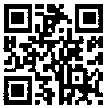This past weekend I had the chance to do some professional development at Luna International.
I attended the KET and PET workshop with some other interested parties and have some reflections on its usefulness for teachers.
One of the first things I learned and can take away from the weekend is what the examiner is looking for.
Examiners aren’t looking for mistakes, per se, but rather the examiner is looking at what the examinee can do. As a teacher I sometimes catch myself looking for mistakes, in order to teach my students something. It is quite a different perspective, in my opinion, because it’s a negative versus a positive approach. Initially, I began the day looking at the mistakes examinees made, and ended the day looking rather at what they were able to produce. Sort of a building up, rather than a breaking down type viewpoint.
Secondly, in the PET exam, 2 examinees take the test together and there is a collaborative component. They do their best to describe, and discuss situations together, helping one another while the examiner listens. This is a great example of student talk time. It can be easy for teachers to fill the class time with instructions, suggestions etc, but at the cost of too much teacher talk time. Finding ways to increase student speaking while reducing teacher talking is an important skill and this is a good example of how. With a short explanation and clear materials the examiner is able to set the goal and let the examinees take the center stage.
Thirdly, the examiner is required to follow a specific script. They aren’t permitted to deviate, which at first seems potentially limiting, but in fact employs a solid teacher tactic of sticking to the plan. It can be easy to branch off into tangent lessons, that in the end neglects the plan at hand. The examiner must be prepared, knowing what comes next in the sequence, which is exactly what a good lesson plan is, a sequence of events that the teacher has predicted.
Lastly, I found it interesting that the test is administered by two people, each with different roles. It reminded me of a class I took at university that focused on the design of teaching which employed a team teacher approach. Both teachers offered different expertise, and worked well off each other, kind of like a play-by-play announcer and a colour commentator in sports events. Sometimes two sets of eyes are better than one.
Moving forward, perhaps something that should be explored is the idea of more, and better team teaching in ESL/EFL environments. This is currently being used in various elementary, junior, and high schools, but my experiences haven’t left a good impression on me. Too often the teachers are not in sync with one another, or simply aren't a good match, and for many other reasons. It appears to be a skill that takes time, effort, and co-ordination.
Thanks to all the other teachers that made their way and shared their views and experiences.
- Simon Eden-Walker
Thanks to all the other teachers that made their way and shared their views and experiences.
- Simon Eden-Walker


No comments:
Post a Comment
By all means leave your comments - please do not be offensive, abusive, or rude. We ask you to sign your comment as well, please.